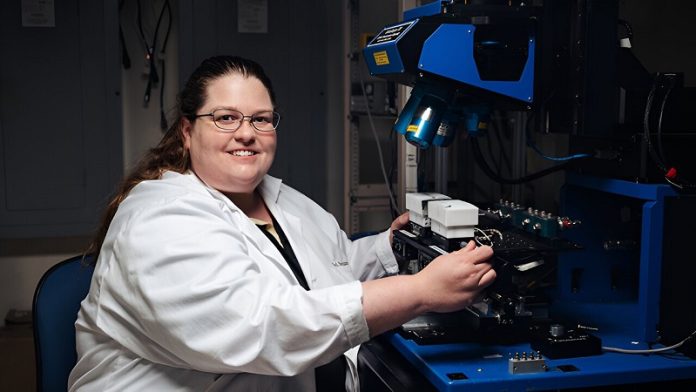
As we rely more on smartphones, electric cars, and other high-tech devices, one major challenge is keeping them from overheating.
When electronics get too hot, they don’t work as well, and over time, the heat can cause damage.
Amy Marconnet, a professor of mechanical engineering at Purdue University, is working on new ways to cool today’s electronics and improve their performance.
Modern electronics, from small gadgets to electric vehicles, generate a lot of heat. To keep them running smoothly, it’s important to manage that heat effectively.
Marconnet’s research focuses on developing new cooling methods and materials that help reduce the heat produced by electronics.
This could lead to longer-lasting devices and better overall performance.
Different types of electronics need different cooling solutions. For example, wearable electronics like smartwatches or virtual reality (VR) goggles must stay within a tight temperature range because they are in contact with people’s skin.
Too much heat could make them uncomfortable or unsafe to use.
On the other hand, powerful devices like electric vehicles need cooling systems that allow them to run at higher powers without overheating.
One of the key areas Marconnet is exploring is phase change materials. These materials can absorb or release heat by changing from solid to liquid or vice versa.
For example, when a device like VR goggles heats up during use, phase change materials can melt and absorb the heat. Later, when the device cools down or recharges, the material solidifies again, releasing the stored heat.
This process helps keep the device cool while still allowing for high-intensity use.
Marconnet’s team, including graduate student Meghavin Bhatasana, has been working with metallic alloys as phase change materials.
These alloys can be used within a chip, offering a compact yet effective way to manage heat without making the device heavier or more expensive.
In addition to phase change materials, Marconnet has also researched thermal greases, which are used between a silicon chip and the parts of the system that spread heat.
However, thermal greases don’t last forever—they can eventually wear out, leading to decreased performance.
To solve this, Marconnet’s team is developing quick testing methods to determine which materials will perform well over time, without having to wait for long-term use.
Another challenge is managing the heat generated by batteries, especially in devices that require fast charging, like electric vehicles. Just like an old-fashioned light bulb gets hot while producing light, batteries create heat during the charging process.
Marconnet and her colleague, Xiulin Ruan, have also developed a special compressible foam that spreads out heat and insulates against cold, helping to extend the life of devices.
Marconnet’s innovative work in cooling electronics is paving the way for more efficient, durable, and powerful devices, from smartphones to electric vehicles.
Two new papers on phase change materials from her lab are currently under review, promising even more breakthroughs in the future.



